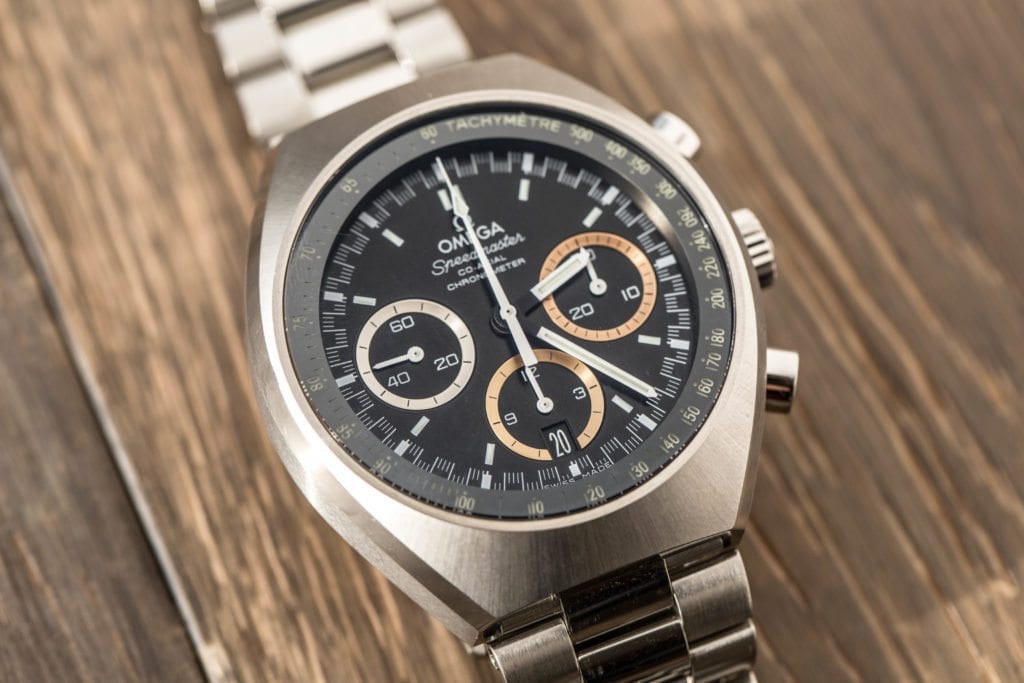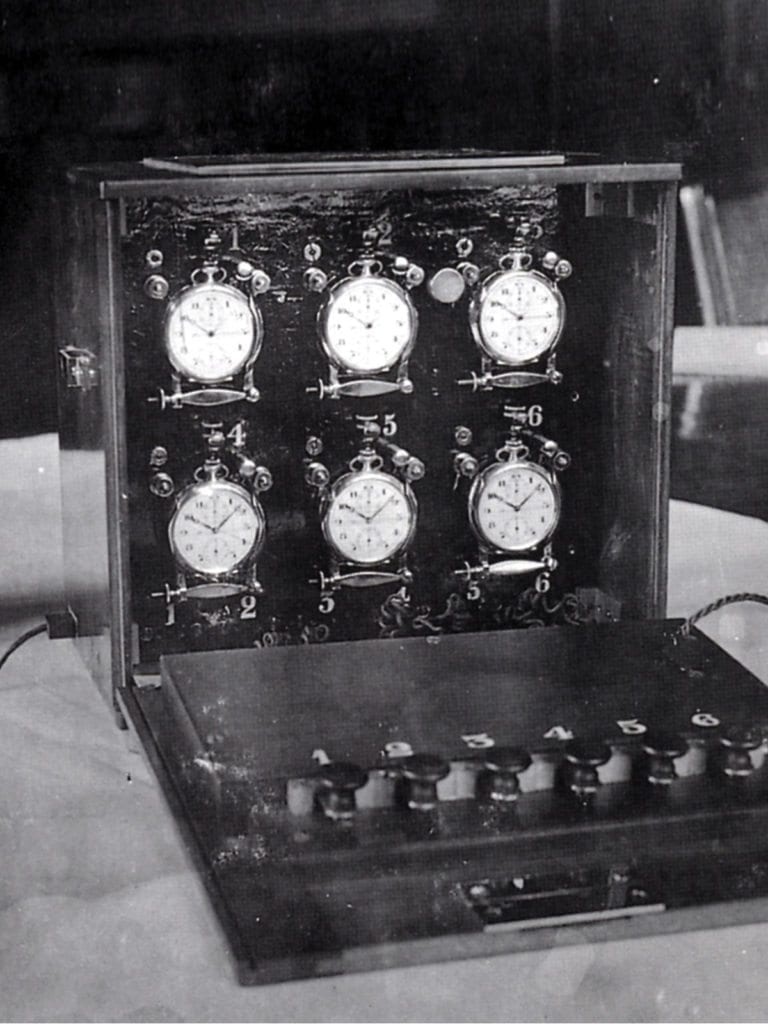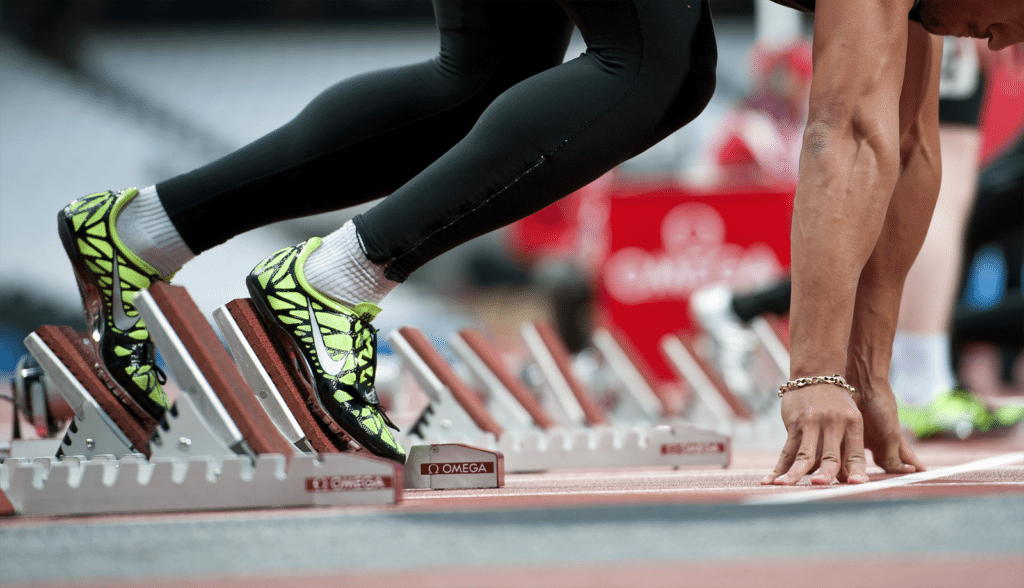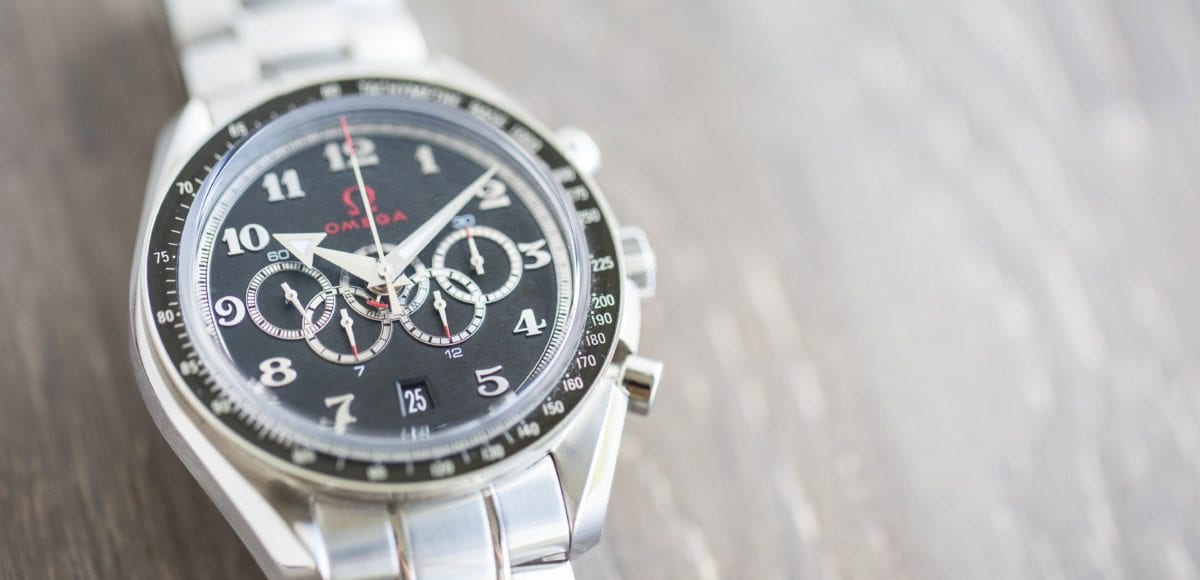Every two years, more than 400 tons of equipment is transported from OMEGA’s Swiss headquarters to the grounds of the Olympic Games.
OMEGA has a long history with the Olympics. Dating back to the Games of the 10th Olympiad in Los Angeles in 1932, OMEGA has provided everything from mechanical chronographs to advanced camera technology in order to record the most precise times. At the 2012 Summer Olympics, OMEGA contributed more than 450 official timekeepers, 850 volunteers, and close to 200 kilometers of timekeeping-related cabling, all in the pursuit of accuracy.
There’s even an OMEGA Olympic Collection—a collection of watches largely inspired by the Olympic Games. For the 2016 Olympics, OMEGA has introduced a new “Rio 2016” collection, with three exciting new takes on its most popular watches:
- The Seamaster Diver 300m “Rio 2016,” which has a wave pattern dial and colorful bezel
- The Seamaster Bullhead “Rio 2016,” which features a design and color scheme inspired by the Olympic Rings
- The Speedmaster Mark II “Rio 2016,” which features bronze, silver and gold subdials to represent the Olympic medals

With the 2016 Olympics on our doorstep, we’ve taken a look at the history of OMEGA and the Olympic games. From stopwatches to ultra-accurate speed skating time technology, join us as we look at OMEGA’s contributions to the Olympics from 1932 to 2016.
1932: The OMEGA Olympics Partnership Begins
OMEGA first served as the official timekeeper of the Olympics in 1932. Hosted in Los Angeles at the peak of the Great Depression, the 1932 Olympics were a much smaller event than in the previous years—due to the immense cost, many athletes simply couldn’t afford to attend.
Despite the poor attendance, OMEGA provided outstanding timekeeping. The company used 30 chronometer certified mechanical chronographs to record events, providing timekeeping precise to a fifth of a second.

OMEGA again used mechanical chronographs to record times at the 1936 Olympics (the 1940 and 1944 Olympics, due to be held in Tokyo and London, were canceled due to World War II) before introducing new technology at the 1948 games.
1948: Cellular Photoelectric Eye, or “Photosprint”
OMEGA’s mechanical chronographs recorded accurate time, but they had one weakness: due to the need to be operated manually by a timekeeper, there was a risk that a slow button push could result in an inaccurate time.
For the 1948 Winter Olympics in St. Moritz, OMEGA used a new proprietary technology, at the time called the cellular photoelectric eye. Eventually known as the “Magic Eye” or “Photosprint,” the technology used a camera to record the exact time at which athletes crossed the finish line.
With its new technology, OMEGA improved its timing accuracy from a fifth of a second, which was the limit of its mechanical chronographs, to 1/100th of a second, allowing for significantly more accurate timekeeping.
1956: The Swim-O-Matic
In 1956, OMEGA started work on the Swim-O-Matic: an automatic timing system that used the force of a swimmer touching the ends of a swimming pool to record times without the need for a timekeeper.

The first iteration of the device, which was called the Swim-Eight-O-Matic, was used at the 1956 Olympics in Melbourne, Australia. Over the next two decades, OMEGA continually improved the Swim-O-Matic, reducing its weight from 150 kg to just 1.2 kg for the 1980 Moscow Olympics.
2012: Pressure-Sensitive Starting Blocks
For the 2012 Olympics in London, OMEGA introduced another innovation: pressure-sensitive starting blocks, which use hidden sensors to detect false starts and ensure no athlete gains an unfair advantage at the beginning of a race.

2016 and Beyond
As OMEGA prepares to host the 2016 Olympics, the company has spared no expense providing the IOC with the best equipment and personnel. More than 250 timekeepers will record athletes at the games, using an estimated 200 tons of precise timekeeping equipment.
Today, OMEGA’s timekeeping technology is more advanced than ever. In place of chronographs and devices like the Swim-O-Matic, OMEGA uses thousands of cameras to photograph events, allowing for timing to an accuracy of 1/10,000th of a second.
As finishes get closer and records get tighter, OMEGA’s precise timekeeping is more important than ever. Expect to see OMEGA record plenty of new records—whether Olympic or world records—as this year’s games begin in Rio de Janeiro.
Images ©: Header, 1; Crown & Caliber. 2-4; OMEGA.
Get More Articles Like This in Your Inbox
We're constantly creating great content like this. So, why not get it delivered directly to your inbox? By subscribing you agree to our Privacy Policy but you can unsubscribe at any time.






